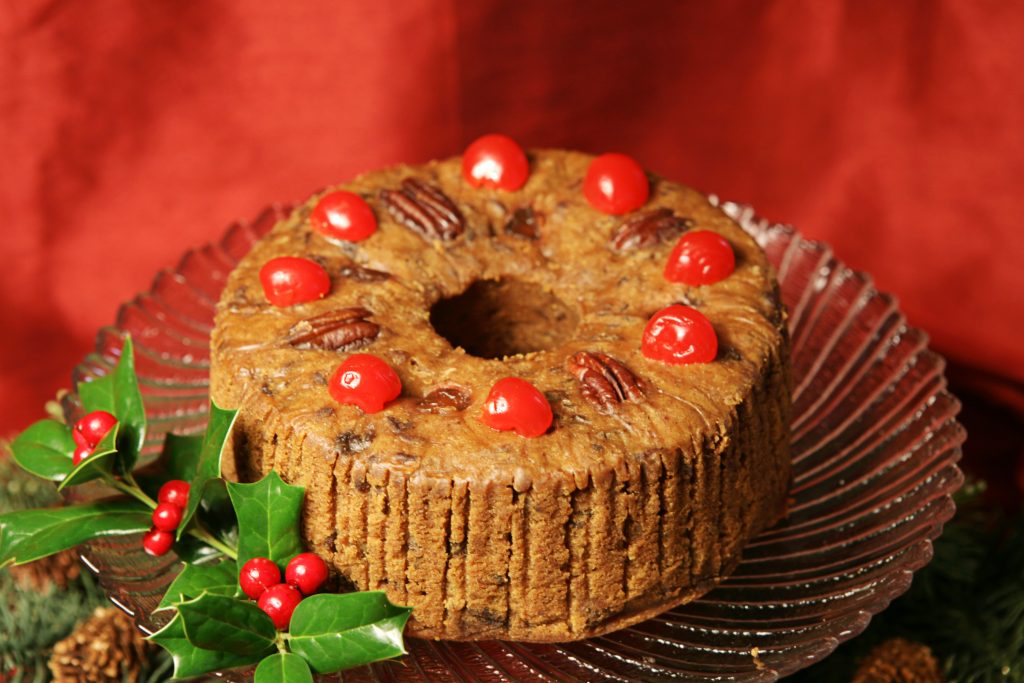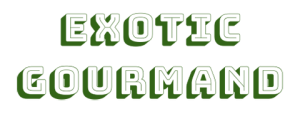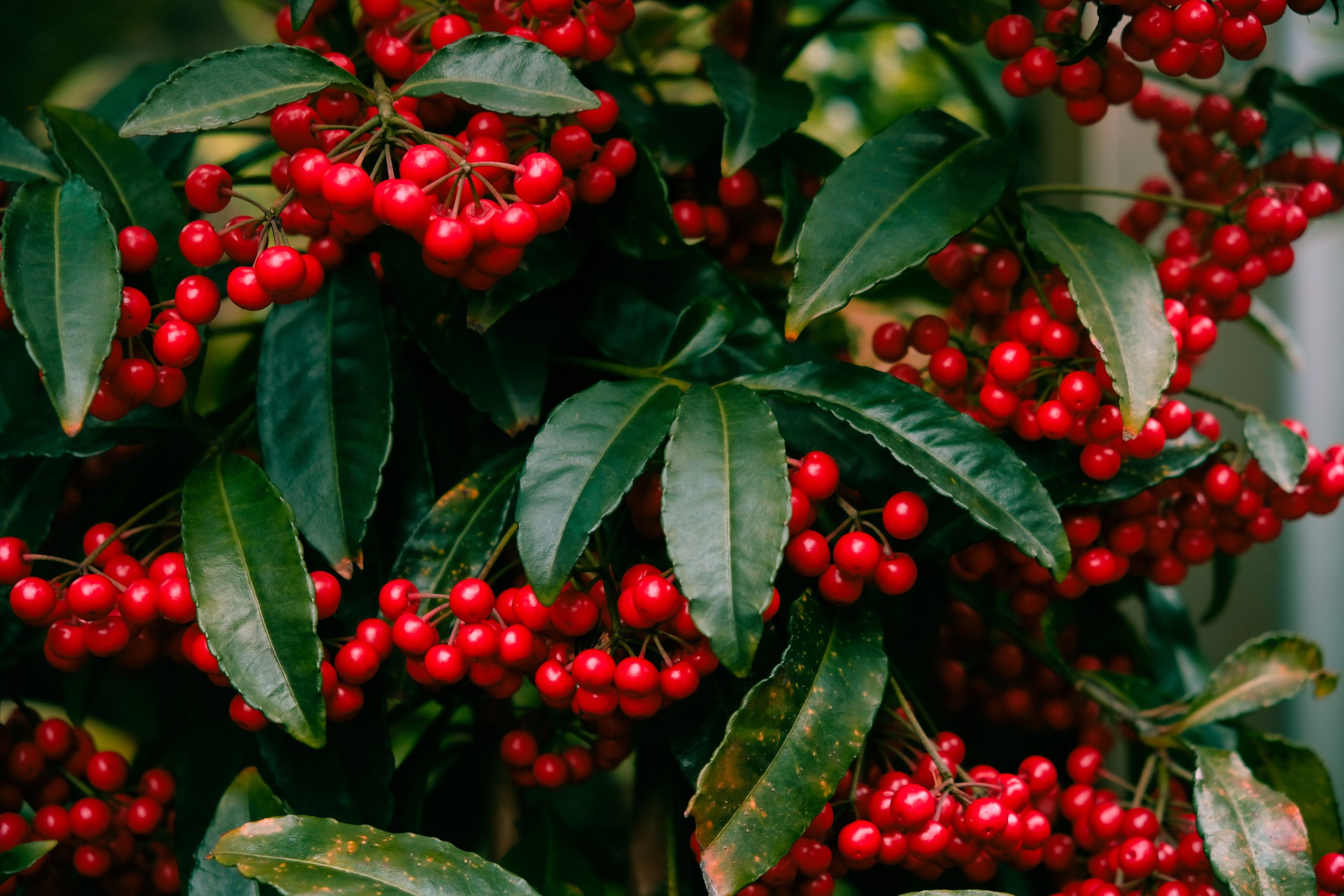Christmas berries are a type of fruit commonly associated with the holiday season. These bright red berries are often used in decorations and are prevalent in holiday-themed dishes and drinks. They also have several health benefits and are used in traditional medicine.
Table of Contents
What is a Christmas Berry?
Christmas Berry is a common name for several plants belonging to the genus Heteromeles. The most well-known species is Heteromeles arbutifolia, also called the Toyon or California Holly.
It is native to the western part of North America, including California, and is an integral part of the native flora. The plant is an evergreen shrub or small tree that can grow up to 30 feet tall.
The Christmas Berry plant produces small red berries that resemble holly berries, hence the name “California Holly.” The berries are approximately 0.25 inches (0.6 cm) in diameter and grow in clusters on the ends of the branches. The berries remain on the plant throughout the winter, providing a festive touch during the holiday season.
In addition to Christmas Berry and California Holly, this plant is known by several other common names, including Toyon, Christmas Holly, and California Christmas Berry.
The flavor of the Christmas Berry fruit is a bit tart and slightly sweet, and it has been compared to the taste of a crabapple. The fruit is not typically eaten raw; it is somewhat astringent and can be tough. However, it is sometimes used to make jams, jellies, and other preserves.
Regarding visual attributes, the Christmas Berry plant has glossy, dark green leaves that are oval or elliptical. The plant also produces clusters of small white flowers in the summer, which give way to bright red berries in the fall.
Note: Some toxic look-alike berries, such as the European Mountain Ash, can cause serious health problems if ingested. Therefore, if you are not 100% certain that your berries are indeed toyon, it’s best to avoid eating them.
The History of Christmas Berries
Let’s dive into how Christmas berries played a role in naming Hollywood, the famed city in Los Angeles. Legend has it that the Santa Monica Hills were once covered in a beautiful plant known as California Holly, or Christmas berries.
When real estate investor H.J. Whitley purchased 500 acres of land in the late 19th century, he was inspired by the canyons filled with these festive-looking berries and decided to name his new land Hollywood (from the Holly berry).
Daeida Wilcox, the wife of a wealthy prohibitionist, was also enamored with the name Hollywood after meeting a traveler on a train who owned an estate in Illinois with the same name. She convinced her husband to use the name, and in 1887, he subdivided his land and began selling it under the name Hollywood.
Beyond Hollywood lore, Christmas berries have a rich history in the geography of the west coast of North America. These native shrubs have been growing wild for thousands of years in coastal habitats in canyons, along semi-dry, rocky slopes, and by creeks.
Their seeds are dispersed naturally by animals, and they’ve been commercially introduced through horticulturists like Theodore Payne and landscape architect Ralph Cornell.
Today, Christmas berries are a popular ornamental plant for urban landscapes and home gardens, and they’re also used as a fire-retardant species in houses in California.

What Does a Christmas Berry Taste Like?
Christmas berries are not typically consumed raw, as they have a bitter taste due to the presence of tannins. Tannins are an organic compound found in many plants that can give the mouth a bitter taste and astringent feeling.
Toyon berries can be made into a jelly or sauce, flavoring many dishes when cooked. The flavor of cooked toyon berries is often described as slightly sweet and tart, with a taste similar to cranberries.
It is important to note that while toyon berries are edible, you should only consume them in small amounts and prepare them properly.
How to Tell When a Christmas Berry is Ripe
Here is how to tell when Christmas berries are ripe:
| Color | The first sign of a ripe Christmas berry is its color. As the fruit ripens, it will turn from a greenish-yellow to a bright red color. The red color should be even throughout the berry and not have any dark spots or blemishes. |
| Texture | Ripe Christmas berries will have a smooth and firm surface. They should not be too hard or too soft. If they are too hard, they are not yet ripe. If they are too soft, they may be overripe and unhealthy. |
| Scent | Ripe Christmas berries will have a sweet and slightly floral aroma. If the berries have a sour or musty smell, they may not be ripe or start to spoil. |
| Taste | The best way to tell if a Christmas berry is ripe is to taste it. Ripe berries will have a sweet and slightly tart flavor. The berry may not be ripe yet if it tastes bitter or sour. |
Note: It’s always best to taste a berry before purchasing a large quantity to ensure it meets your expectations.
Are Christmas Berries Invasive?
The Christmas berry is considered invasive. They were introduced to Hawaii in the late 1800s as an ornamental plant and have since spread rapidly throughout the islands, competing with and displacing native plant species.
However, they have become invasive in Florida, Georgia, Alabama, and Hawaii. That is because they produce allelopathic compounds that threaten the habitats of endangered plants and animals.
The fruits of the Christmas berry are a particular problem for Hawaii’s ecosystem. They are very high in vitamin C, which makes them attractive to birds, who then spread the seeds far and wide. The spread of these fruits is causing a decline in native bird populations and the loss of native plant species that can’t compete with the invasive Christmas berry.
Efforts are being made to control the spread of Christmas berries in Hawaii. One method is to remove the plants mechanically, but this is labor-intensive and expensive. Another approach is using chemical herbicides to kill the plants, which can also harm native plant species and wildlife.
Can I Eat Raw Christmas Berries?
Toyon berries are technically edible when raw, but they taste bitter and can cause discomfort or digestive issues in some people. In traditional Native American cuisine, berries were often cooked or dried before consumption to remove some bitterness.
Cooking with Christmas Berries
Before using berries in recipes, removing the seeds and stems as they are toxic is important. The easiest way is to dry the berries and then use a mortar and pestle to separate the seeds from the flesh.
You can also freeze the berries overnight, making the separation process more straightforward. Once the seeds and stems are removed, you can use the berries in many recipes.
Toyon berries can be used in various recipes, including sauces, chutneys, and baked goods. Traditional cuisines that use toyon berries include Native American and Californian cuisine.

Here are some examples of dishes that use toyon berries:
Toyon Cider: Made from the fiery red berries of the Toyon plant, it’s a tart and tangy beverage that’ll make you feel warm and fuzzy. Plus, it’s a great way to add excitement to your usual cider routine.
Christmas Berry Trifle: With layers of cake, fruity jam, and fluffy whipped cream, this trifle is like a Christmas miracle in every bite. And let’s remember the star of the show: those bright red Christmas berries, which add a pop of color and a burst of flavor.
Christmas Berry Pudding: This pudding also has some layers oscillating between sweet cream and tangy berries. This dessert is very rich and indulgent.
Christmas Berry Pavlova: The classic pavlova cake, but with a twist. This pavlova will impress everyone with a crispy meringue base, smooth whipped cream, and tart Christmas berries.
How to Store Christmas Berries
Toyon berries can be stored on the counter for a few days without direct sunlight. You can store Toyon berries in the fridge for up to a week and a year in the freezer.
To freeze: Wash the berries, remove the stems, and place them in a single layer on a baking sheet. Freeze for a few hours, then transfer the berries to a freezer-safe container or plastic bag.
Nutritional Benefits of Christmas Berries
Indigenous tribes used the leaves and berries for medicinal purposes, such as soothing upset stomachs, regulating menstrual symptoms, reducing skin irritations, and increasing hydration.
There are currently no studies that attest to their health benefits.
Warning note: Christmas berries contain a chemical compound called cyanogenic glycoside, which can release hydrocyanic acid when consumed, which can be harmful in large amounts and may even cause poisoning. Therefore, it is best to eat a moderate amount of cooked berries.
Where to Purchase Christmas Berries
You can find Christmas berries in certain specialty stores and farmers’ markets. The berries are typically available from November to January, coinciding with Christmas.
If you want to purchase Christmas berries, check with local farmers’ markets or specialty food stores. You can also search online for retailers specializing in wild edible plants and berries.
It’s worth noting that while toyon berries are technically edible, they should be consumed in moderation as they contain a small amount of toxins that can cause digestive issues. If you are unsure about the safety of consuming toyon berries, it’s best to consult an expert or avoid them altogether.

